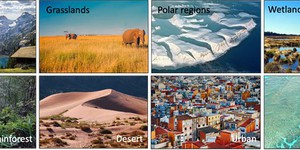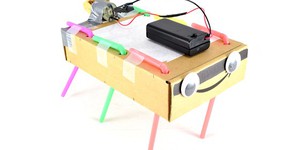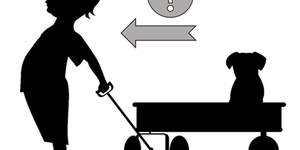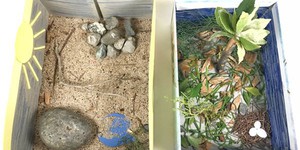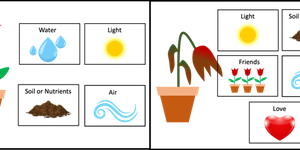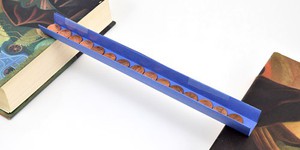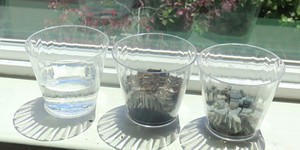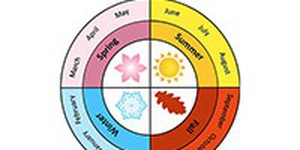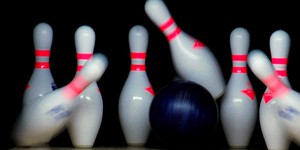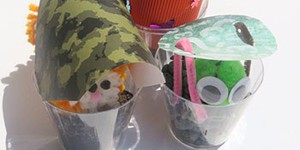Kindergarten Lesson Plans (19 results)
Science Buddies' kindergarten science projects are the perfect way for kindergarten students to have fun exploring science, technology, engineering, and math (STEM). Our kindergarten projects are written and tested by scientists and are specifically created for use by students in kindergarten. Students can choose to follow the science experiment as written or put their own spin on the project.
For a personalized list of science projects, kindergarten students can use the Science Buddies Topic Selection Wizard. The wizard asks students to respond to a series of simple statements and then uses their answers to recommend age-appropriate projects that fit their interests.
Let us help you find a science project that fits your interests, with our Topic Selection Wizard.|
Select a resource
Sort by
|
Lesson Plan
Grade: Kindergarten
24 reviews
In this lesson, students play a game. Each classroom corner represents a habitat. After selecting an animal card, students have to move to the matching habitat while acting out the animal displayed on their card. By explaining why they selected a certain habitat, students realize that a habitat is a place that helps an animal survive.
Read more
NGSS Performance Expectations:
Featured
Lesson Plan
Grade: 6th-8th
7 reviews
Junkbots are easy-to-build robots that you can make using a simple circuit and some recyclable materials. In this lesson, your students will learn about engineering design as they compete to build the fastest robot. No previous robotics experience is required!
Read more
NGSS Performance Expectations:
Lesson Plan
Grade: Kindergarten
10 reviews
Your kindergarten students are used to moving objects. They throw balls, play with toy cars, and sweep the floor, but how much do they think about these actions? In this fun, hands-on lesson, you will use a game (rolling balls) to explore how pushing and pulling affects an object's motion.
This lesson can be expanded with a second lesson exploring how objects can push each other, and how weight influences motion.
Read more
NGSS Performance Expectations:
Lesson Plan
Grade: Kindergarten
23 reviews
At some point, many children wish for a pet animal to play with and care for. But what does it take to keep an animal alive and healthy? In this engaging lesson plan, children will act out adopting a pet and shopping for items based on its needs. As they bring their items together, they will notice that every animal needs food, water, shelter, and air to survive.
Read more
NGSS Performance Expectations:
Lesson Plan
Grade: Kindergarten-2nd
5 reviews
Get creative with your students in this hands-on lesson plan! Students will use mostly natural materials to build a shoebox habitat that mimics a real-life habitat for an animal of their choice. As they present their miniature habitats to each other, students realize that not all habitats are suitable for all animals. Each animal species needs the resources of a specific habitat to survive.
Read more
NGSS Performance Expectations:
Lesson Plan
Grade: Kindergarten
3 reviews
In this lesson, students will role-play a consultation between a plant scientist and a plant owner. The goal is for the plant scientist to identify what is wrong with the plant based on the information given by the plant owner. As they evaluate what the unhealthy plant has or doesn't have, students will realize that plants need four things (air, water, light, and soil) to live and grow.
Read more
NGSS Performance Expectations:
New
Lesson Plan
Grade: 6th-12th
Create a two-part system for filtering greywater. Teams will focus on communication and systems engineering as they build separate components to filter solid and liquid waste and then combine them into one device.
Learning Objectives
Students will:
Consider the potential effects of drought and how greywater could be part of the solution.
Design a system for filtering out solid waste or liquid waste.
Consider effective communication strategies with their team.
Collaborate on their design…
Read more
Lesson Plan
Grade: Kindergarten-2nd
15 reviews
Your students have probably walked or ridden over a bridge at some point in their lives. In this engineering activity they will design and make bridges out of folded pieces of paper, and test how much weight they can hold with pennies. How does the shape of a bridge affect its strength? Let your students explore and find out with this lesson!
This lesson can be expanded to a second lesson looking at how the material a bridge is made out of can change its strength; see second lesson for details.
Read more
NGSS Performance Expectations:
Lesson Plan
Grade: Kindergarten
3 reviews
Kindergarten students associate the sun with light and warmth. This lesson helps them expand this knowledge by getting their hands dirty! They will fill cups with soil, water and rocks and place them in the sun and shade for a while. By finding out how they can tell where a cup has been stored, they will learn how the sun affects Earth's surface.
In a follow-up lesson, Create Shade to Protect from the Sun, students figure out how to protect a territory from getting too hot in the sun.
Read more
NGSS Performance Expectations:
Lesson Plan
Grade: Kindergarten
In this lesson, students will create weather report cards of their birthday seasons and analyze them to identify differences and similarities between them. Based on their observations, they will explain how weather conditions change between seasons and discuss how we adapt to seasonal changes.
Read more
NGSS Performance Expectations:
Video Lesson
Grade: Kindergarten
8 reviews
Kindergarten students are used to moving objects. They throw balls, roll toy cars, and sweep the floor, but how much do they think about the forces behind these movements? In this fun hands-on lesson, students will use a game (rolling balls) to explore how pushing and pulling affects an object's motion.
Read more
NGSS Performance Expectations:
Lesson Plan
Grade: Kindergarten
3 reviews
Students will enter this lesson knowing that materials get warm in the sun. In this fun follow-up activity, your students will get creative with craft materials. They will figure out how to protect an "animal" and its territory from getting too hot in the sun. What will they build to keep their animals cool?
This lesson connects effortlessly with the How Sunlight Warms the Earth lesson.
Read more
NGSS Performance Expectations:
|
Explore Our Science Videos
3D Printing with Icing (no 3D printer required!)
Lift Ice with Yarn STEM activity
How Far Can a Sneeze Go?

